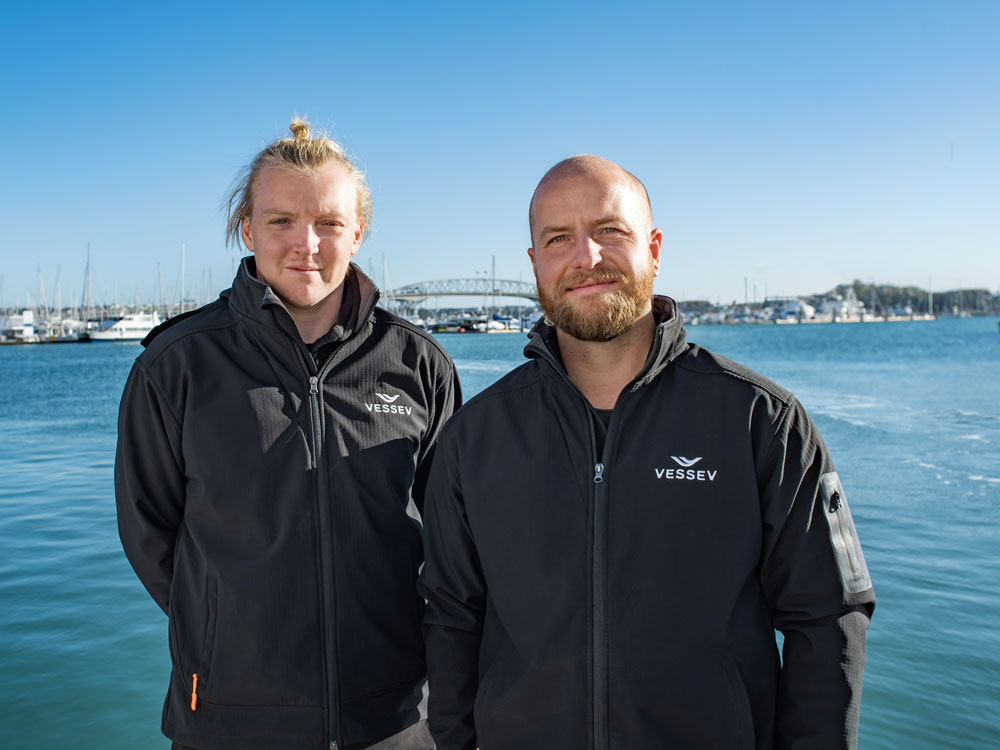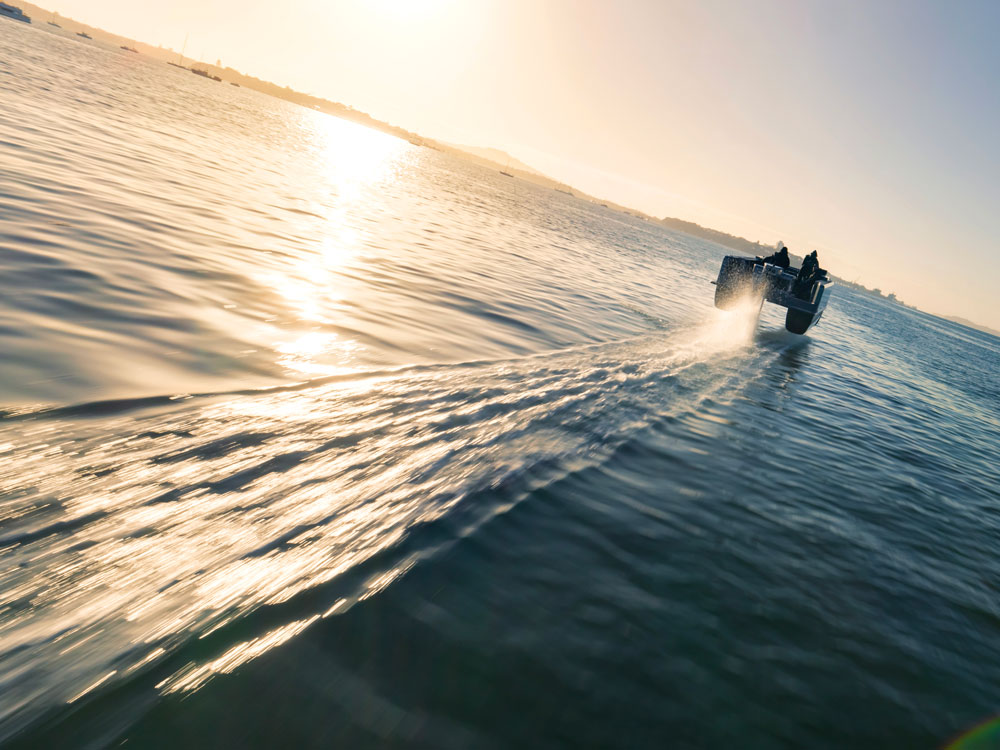Auckland, New Zealand is about to welcome its first all-electric passenger ferry, which will combine batteries and hydrofoils to ‘fly’ above the waves, reducing impact and drag, without emissions. The VS-9 has been produced by Vessev, a company aiming to roll out electric vessels incorporating sport sailing performance-level foiling tech for “premium tourism services”.
The first VS-9 unit has undergone 24 evaluation test sessions since its launch in mid-May, and, at the time of writing (late June), was about to undergo final cabin and interior outfitting before relaunch in August. A commercial application of the VS-9 already has the go-ahead, with domestic ferry operator Fullers360 signing up as the boat’s first customer.
Eric Laakmann, Vessev CEO, comments: “Traditionally, larger vessels are required to deliver a comfortable passenger experience as they can handle the impact of waves and wake. By flying above the waves, the VS-9 delivers a large vessel experience on an agile platform that can be berthed and charged in nearly any marina. The VS-9 will enable thousands of new routes around the world that are currently impractical for traditional vessels.”
The 9m-long VS-9 will transport up to 10 passengers at a service speed of 25 knots, with motions so smooth the experience will be more akin to “flying in a quiet airplane than sailing”, Laakmann adds.

Eric Laakmann (left) and Max Olson, Vessev: “Our objective is to break down the barriers to adopting electric vessels”
Vessev was founded in 2018 by Max Olson, now CTO. His team comprises engineers and boatbuilders with experience in the production of small electric craft, America’s Cup-winning racing yachts and even orbital space rockets. For the VS-9 project, Vessev teamed up with NetZero Maritime, a division of Fullers360, which supplied Vessev with first-hand information relevant to the ferry’s specific operational requirements.
Olson says: “We use many of the same techniques used by winning America’s Cup teams, such as high-precision flaps, which change shape below the water to optimise the angle of attack. The flaps can move very quickly: end-to-end in less than half a second. They give the VS-9 so much authority in waves to react to them and maintain an incredibly stable platform.”
Carbon-fibre laminates were used in the VS-9’s build. Its foils are fully retractable, so the ferry can enter shallow waters, or be transported on a trailer, without issues. Laakmann says: “The ability to remove the foils from the water completely is a design element we’re particularly proud of. We were told it would be impractical, but we’ve delivered a system which makes it easy for operators to maintain pristine foils for maximum efficiency.”
The foil stabilisation system kicks in at 12knots, reducing pitch and roll motion even when the boat is not fully on foils and ‘flying’. The ferry then transitions from ‘foil assist’ to ‘full foiling’ mode at 18-19knots, then settles on an optimal efficient cruise speed of 22-25knots. Olson adds: “By riding above [the waves], we create a vessel that can operate throughout a wider range of sea states than ever. That rolling sensation you feel on traditional boats just disappears when the VS-9 enters foiling mode…the more challenging use cases that the VS-9 will operate in would not be possible with a similar non-foiling vessel.”

The VS-9 transitions from ‘foil assist’ to ‘full foiling’ mode at 18-19knots, before settling on a cruise speed of 22-25knots
The ferry’s recent evaluation tests were conducted at Westhaven Marina in Auckland, supervised by certifying body Maritime New Zealand. The VS-9 was accompanied by a 9m, petrol-fuelled chase boat, which undertook the same manoeuvres and distances as the ferry, enabling Vessev to compare the different craft types.
Recalling the weather and wave conditions, Laakmann says: “On some of our test sessions, we had [wind speeds of] 25knots/gusting 35knots with wind waves to match. The sea state had waves averaging 0.75m but a few wave faces were over 1m”. He adds: “While the VS-9 didn’t have any issues operating in these sea states, it was next to impossible for the chase boat to follow along without slamming through wave after wave.”
Vessev says that, based on the results of two weeks of sea trials, running up to three test sessions each day on a standard AC 3-phase connection, the VS-9 could reduce energy consumption by up to 95%, “facilitating a range of up to 50nm at 25knots and significantly reduced operational costs”. Laakmann adds: “At the end of each day, the cost of the petrol fuelling the chase boat is 25 times the cost of the electricity used to charge the VS-9.”
The test sessions also demonstrated that the ferry’s batteries could be topped up via the existing electric chargers available at most marinas. Vessev predicts that, when using high-speed DC charging points, operators could achieve 0.8nm of range for each minute of charging time.
Laakmann reveals that Vessev is looking to put together an 18m version of the boat, the VS-18, which could carry 100 passengers. That model would use the same technology and design as the VS-9 while augmenting its seakeeping capability and increasing the route opportunities available to owners and operators. Laakmann also sees potential applications in the recreational boat market, covering “everything from private boaters to superyacht owners”. He adds: “Our objective is to break down the barriers to adopting electric vessels.”






